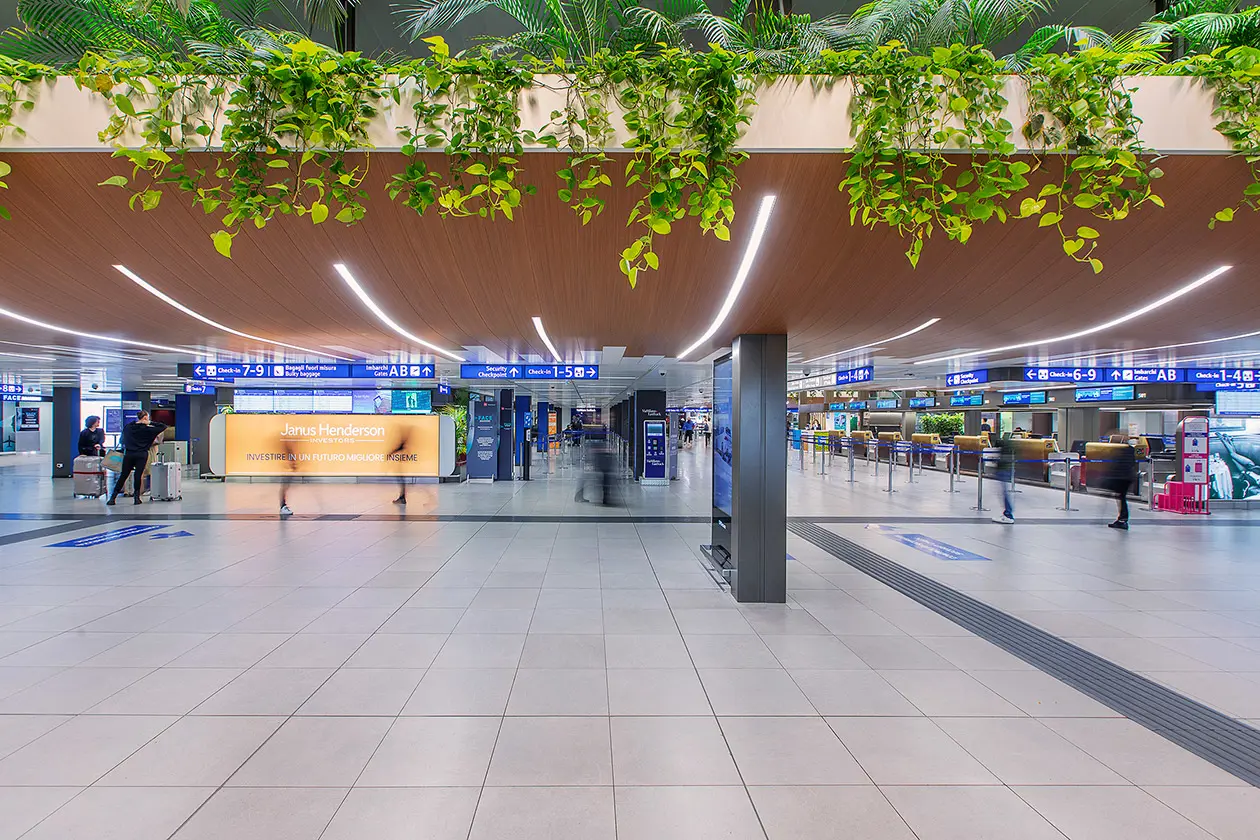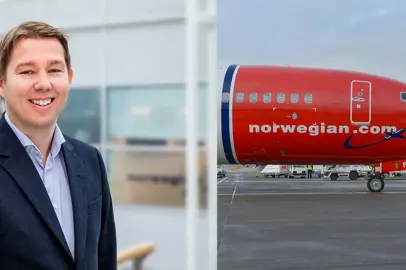Interview with Aldo Schmid
With the start of the 2025/26 winter season, Milan Malpensa and Milan Linate airports present an enhanced network, new routes and initiatives designed to meet the needs of passengers and airlines.
To find out about the strategies, objectives and growth prospects of the Milan airport system, we met Aldo Schmid, Head of Aviation Business Development at SEA, who illustrated the results achieved and the lines of future development, starting from Malpensa, the international hub of Northern Italy, to Linate, the city airport increasingly attentive to business and leisure travellers.

"The main task is to lead the team dedicated to the development of air traffic for Milan airports, with the aim of expanding the network of destinations, increasing the number of operating airlines and optimizing the frequencies and flights available. The activity is concentrated in particular on Malpensa airport, which has a significant residual capacity and offers greater growth opportunities, while Linate now has almost all the slots allocated and very limited margins for expansion. The role involves constant analysis, strategic planning and collaboration with stakeholders in the sector, to strengthen the competitiveness and attractiveness of the Milan airport system on the international scene".
How does the process of developing new routes and collaborations with airlines take place?
"The process always starts with an in-depth analysis of market data, based on databases and specialized platforms that allow traffic flows between any city in the world to be monitored. These analyses provide information on operating companies, transit hubs, seasonality and demand trends, allowing you to identify the best opportunities for Milan. Based on the results, potentially affected airlines are contacted. Relationships with carriers are then developed and consolidated through meetings, presentations and participation in major industry events such as Routes or the IATA Conference. The main interlocutors within the companies are the network managers, who coordinate internal evaluations involving other departments. At the same time, SEA maintains close relations with regulatory authorities (such as ENAC and Assoclearance) and with GSAs (General Sales Agents), which represent airlines, especially if they do not have a direct presence in Italy".
What are the regulatory and commercial aspects that influence the development of air traffic and what are the future priorities?
"The air transport sector is heavily regulated by international regulations and agreements. Connections with non-EU countries are governed by bilateral traffic rights agreements, which stipulate which carriers can operate which routes. In some cases, EU-wide agreements called "comprehensive" or "vertical" come into play, which allow any European company to operate flights between any EU country and a non-EU country that is a signatory to the agreement, without the limitations of traditional bilateral agreements. Operations have also been developed with fifth freedom carriers (i.e. companies that can transport passengers between two countries other than their own) testifying to SEA's ability to identify creative solutions in compliance with the regulatory framework. To operate, a company must have slots, traffic rights, security clearances, official designations, and adequate insurance coverage. To support new routes and more strategic initiatives, SEA can enter into marketing support agreements with carriers, especially in start-up phases. The main activities are the continuous monitoring of market opportunities, the constant dialogue with airlines, the finalization of agreements for the development of new routes and, in general, the strengthening of Milan's international network".
What does the trend of the 2025/26 winter season look like compared to the summer season and the previous winter?
"The winter season confirms a positive and growing trend compared to the previous winter, with an increase in the number of seats offered of about 15% for long-haul, among the highest in Europe. Unlike the summer season, which is more dynamic and characterized by new route launches, winter reflects a more contained but constant growth, largely driven by the services introduced in the summer season. Large companies tend to invest mainly in the summer, while in the winter a cautious approach prevails. However, for Milan Malpensa airport the results are significant: the percentage growth of the total offer places it among the top five European airports, with continuity with the excellent results recorded in previous seasons. This trend confirms the solidity of the development path undertaken and the airport's ability to maintain high performance even in a period of the year that is traditionally weaker for air traffic".
What are the results achieved in terms of network and competitive positioning of Milan Malpensa airport?
"Malpensa airport has consolidated a top position among the major European airports thanks to double-digit growth and a record in long-haul flights. During the winter season, Malpensa is in fact number one in Europe for percentage growth on intercontinental traffic, a sign of the effectiveness and strategy put in place. Considering the whole of 2025, the overall network served about 210 destinations with scheduled flights, of which 115 European, including about 15 Italian and the rest (95) intercontinental. The direct connection with the main European cities is now widespread, while long-haul expansion is the top priority, because it contributes decisively to Milan's international positioning as a great metropolis connected with the world".

What new routes and developments are planned, and what role do low-cost airlines and high-profile carriers play?
"During the winter season, new routes operated by low-cost airlines have been introduced, such as Wizz Air, Ryanair, easyJet, Eurowings, to Brasov, Glasgow, Plovdid, Sal, Strasbourg and Hanover , to which Ohrid and Cluj will be added at the beginning of the next summer season. American Airlines' daily flight to Miami, a destination considered strategic for Milan, is scheduled for the summer, along with the arrival of Asiana Airlines, a South Korean airline classified as 5-Star Skytrax (an award given to only ten airlines in the world for excellence in service and overall quality). With Asiana, the number of 5-Star Skytrax carriers operating at Milan Malpensa will rise to eight, a level surpassed only by two major European airports, London Heathrow and Paris-Charles de Gaulle, which have 9. Low-cost airlines continue to play a fundamental role in the growth of Milan's airports, ensuring direct point-to-point connections on short and medium haul, a complementary model compared to the hub-and-spoke system of traditional airlines. This dual soul (widespread connectivity in Europe and strengthening of intercontinental long-haul) is the key to Malpensa's success and sustainable growth strategy".
Which continent among those connected today represents the main growth engine for Milan airports?
"Without a doubt, Asia is fundamental to our growth today. It is a market that has given us great satisfaction and that continues to generate very significant traffic volumes. We are, in Europe, among the airports with the greatest mass of traffic to Asia, both through our direct flights and through the main European and Middle Eastern hubs. We have invested heavily to increase direct traffic from Milan to these destinations and, in many cases, even beyond, strengthening Malpensa's intercontinental network. Today we can proudly say that Malpensa is in fourth place in Europe for the number of direct destinations served in Asia, a result of absolute importance if we consider that we do not operate as a traditional hub but with an open and flexible model. In front of us, in terms of total number of destinations, there are only Frankfurt, Paris-Charles de Gaulle and London Heathrow: being immediately after three world reference airports is a source of great satisfaction for us and confirmation of the work done in recent years".

What are the news of the winter season for Linate Airport?
"Linate airport has the slots almost completely allocated, so the news emerges only when an airline decides to use an already assigned slot for a new destination or transfers slots to other carriers (as happened following the request of the authorities for the ITA LH procedure), or adds frequencies on weekends, where there is still some operational availability. However, there is an interesting trend towards traffic diversification: historically oriented towards the business segment, Linate is expanding its offer towards leisure traffic, which is growing strongly.
Among the novelties, EasyJet will introduce flights to tourist destinations such as Gran Canaria and Porto, and the addition of further similar routes is not excluded. On the business front, Eurowings will launch a new connection to Stuttgart. Despite the saturation of slots, Linate is therefore evolving with a strategy aimed at diversifying the offer and also intercepting the leisure public, thus strengthening its role as an increasingly dynamic and connected "city airport".

What opportunities and impacts will the Milano Cortina Winter Olympics bring to Milan airports?
"The Milan Cortina Winter Olympics represent an extraordinary international showcase for airports, for the city of Milan and for the entire region. The interest today is much wider than in the past and also involves the eastern markets and countries where winter sports are not traditional, thus amplifying the visibility and scope of the event. It is essential that the overall experience is perceived as positive, attractive and well-organized: a good international perception will help strengthen the Milan brand and generate benefits that will last beyond the Olympic period, with positive effects on tourism and trade flows. As far as air traffic is concerned, we expect an increase in the load factor (i.e. the percentage of seats occupied on each flight), especially between February and March, normally weaker months, with benefits for airlines and for our airports. There will be no structural expansion of the network, but additional targeted flights are planned, in particular from North America and Japan as well as from some European countries. At the same time, operational adjustments are being prepared to better accommodate sports teams and oversize luggage, typical of winter disciplines, with special attention to handling and quality of service. The goal is not so much to achieve extraordinary volume growth, but to ensure an efficient and enjoyable travel experience for all passengers. We have studied the cases of other major events, such as Paris, which showed mixed results: this teaches us to maintain realistic expectations, focusing more on quality and image than on a sudden increase in traffic".
What is the balance of the current performance of Milan Malpensa and what are the development strategies for the medium term?
"The current balance is extremely positive: Milan Malpensa is recording one of the highest percentage growth in Europe among large and medium-sized airports, in the range of over 25 million passengers per year. According to progressive data for September 2025, Malpensa is in fact the airport with the highest growth on the continent, a result comparable only to that of Istanbul's Sabiha Gökçen airport, located on the Asian side of the city. Looking to the future, medium-term development strategies move in two complementary directions. On the one hand, the enhancement of consolidated markets, in particular Asia and North America, which, despite being already well served, continue to offer margins for the opening of new routes. On the other hand, the focus on high-potential emerging markets, such as Latin America and India, which represent the areas of greatest interest for the coming years. In Latin America, demand is strong and constantly growing, but development is held back by the lack of solid and competitive local carriers, an element that makes the creation of new direct connections more complex. India also shows significant potential, but the limited availability of large domestic companies slows down its expansion. However, with the growth of the Indian airline sector, it is expected that these opportunities could materialize in the medium term".
Interview by Angela Trivigno
Avion Tourism Magazine
Photo: Copyright © SEA Aeroporti di Milano
Visual: Copyright © SEA / Sisterscom.com - Depositphotos
All rights reserved. Reproduction is prohibited.
Discover Milan

Partnership with Skyscanner
Flights from Milan airports

Partnership with Booking.com / Travelpayouts
Searching for Milan Hotels





